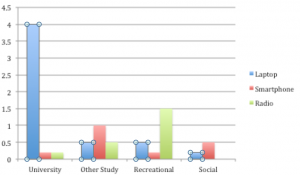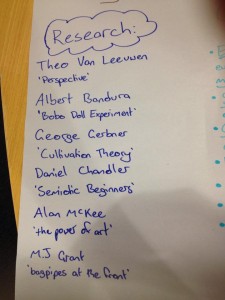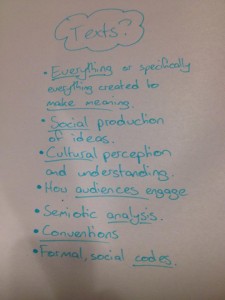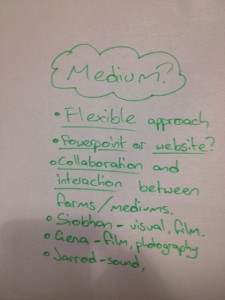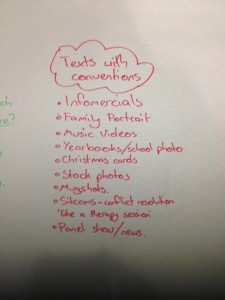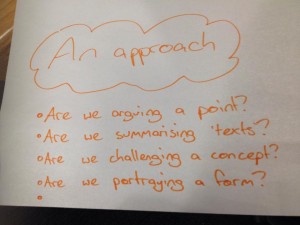Brian’s session on ‘audiences’ discussed the role they play in consuming and making sense of media. He also touched on the identification and categorisation of audiences into groups, in broadcast media as vast as ‘the public’ or ‘the masses’. This idea that you can group individuals by numbers and statistics into ‘markets’ is what drives targeted advertising. This information is valuable not just to advertisers but to commercial broadcasters and media producers alike.
Thus, we were prompted in class to think of what kind of an audience we are. I broke myself down into three categories:
- Demographic: youth, male student, urban with rural background.
- Means (devices): radio, laptop, smartphone, ps3, newspaper – online and print.
- Interests: sport, music, politics and tv shows.
Below is a rough graph of the amount of time (hrs) I access my three main digital mediums daily and for what purpose. NB, it includes time spent multi-tasking.
I have begun noticing ways in which advertisement of products, services and other texts are targeted towards me based on my consumption of media. I am an avid user of Spotify radio (for those unfamiliar it is a music program which allows you to create your own library and playlists) and found that not only are their music recommendations personalised but their advertisements are based on what you listen to. They make great assumptions of audience based on statistical data no doubt sold to them by another party – you know that box you have to tick?
For example, when I first created a playlist of Aussie Hip-hop I was being bombarded with advertisements for cold beer and headline sporting matches. As I browsed through some of my favourite punk artists it became apparent that I’d be interested in band merchandise and vintage clothing. It wasn’t untilI created a playlist for my grandmother’s birthday, with all the old time favourites, that I found out how important it was that I sort out my life insurance now and was interested to learn all the super options available to me.
It is interesting to see the conclusions that can be reached about a media audience by what they have previously watched – the main fault being that these are run, like tv ratings, solely on ‘exposure’ and not ‘engagement’ with material.
